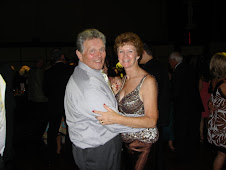 There were over 1000 people, staff and family at the event. from 6:00 to 7:00 there were games and an open bar n the lobby of the banquet room. As people gathered we got to look at the costumes of those who were dressed in the theme; the 70s disco look was everywhere, and the cameras were popping. We're in a hurry right now with Randy coming so we'll throw up the pictures later.
There were over 1000 people, staff and family at the event. from 6:00 to 7:00 there were games and an open bar n the lobby of the banquet room. As people gathered we got to look at the costumes of those who were dressed in the theme; the 70s disco look was everywhere, and the cameras were popping. We're in a hurry right now with Randy coming so we'll throw up the pictures later.At about 7:30 the owner and the president arrived dressed in glitter and "afro" wigs. They led the whole group into the room to "Stayin' Alive". The Bee Gees were big this evening.
The room was a massive affair and set up as a multimedia circus. The meal was a typical Chinese banquet that you might get at a wedding. There were about 10 courses, mostly fish based (including shark fin soup).
The entertainment was hosted by a professional MC but provided by staff members in the form of a dance contest. These groups had practiced long and hard and it showed. Over the course of the dinner there were also team building games and contests with some pretty large prizes. The door prizes were awarded on the basis of draws of 50 at a time from the names of those in attendance. Some of the prizes were large flat screen televisions, laptop computers, high tech cell phones and trips for two to seven days. Everything was paid for by the college. Awesome!





 Politics/Religion
Politics/Religion





